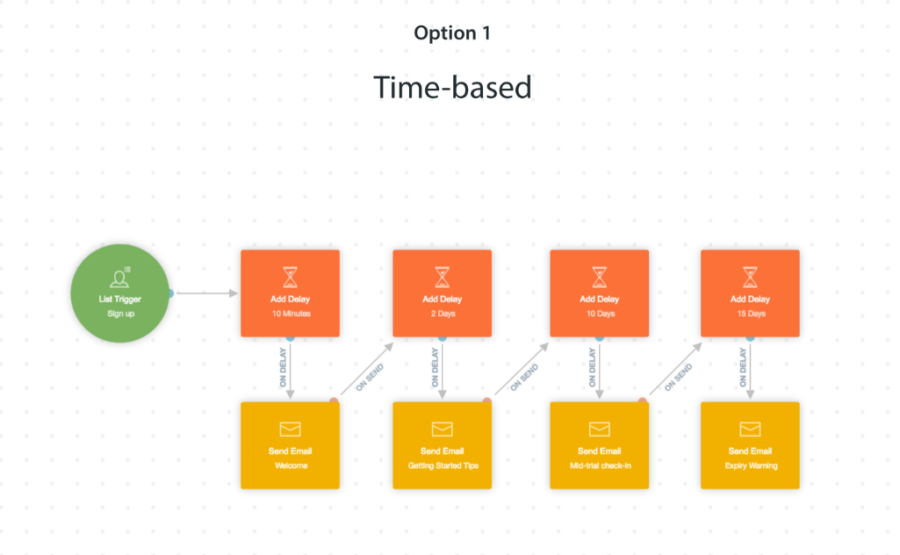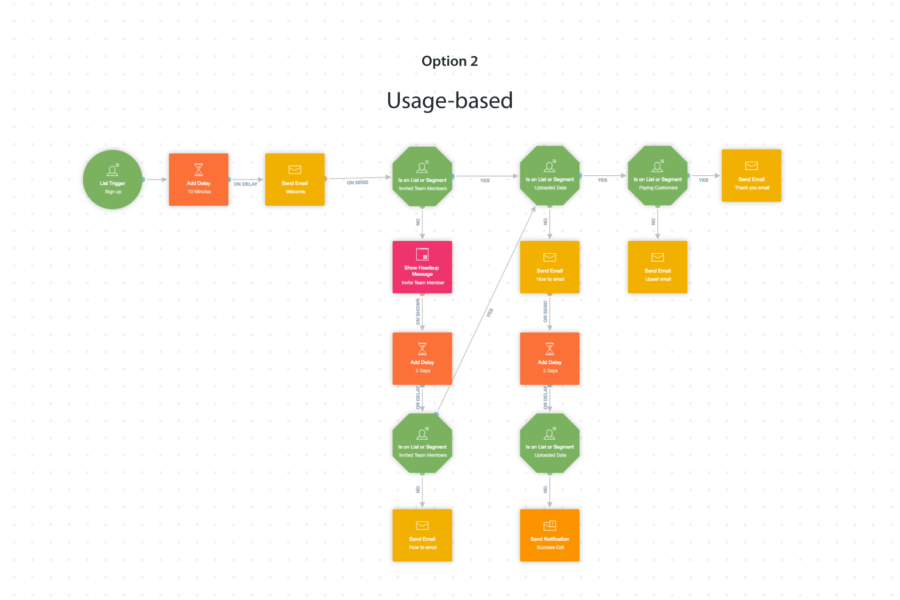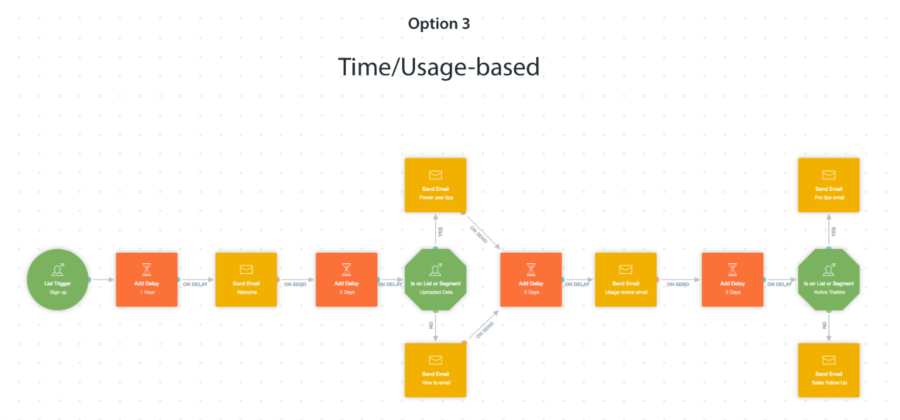Launching a free trial for your new SaaS app requires some careful planning and boundless creativity. But it’s well worth the time and effort—especially if you can convert free trialists into paying customers at a rate greater than 15% in the likes of Dropbox or Zendesk. Trialists who are successfully activated have a higher chance of becoming buyers, often without costly manual sales efforts, and typically will have higher product engagement, upgrade, and retention rates in the long run. The best part is you can scale activation efforts and create a cohesive trial experience with the help of marketing automation to structure, target, time, and personalize your messaging.
Once you’ve decided to create an automated SaaS trial and laid down all the groundwork — you’ve identified your goals, pinpointed key behaviors, and mapped out your nudges — the next step is choosing which of the three most common types of SaaS trial journeys are the best for your company: time-based, usage-based, or a combination of both. We’ll walk through the capabilities and benefits of each.
Option #1: Time-based – This is a series of emails (and/or in-app messages) dripped through the course of a free trial. It’s an easy place to start if you’re beginning from scratch, helps you get baseline conversion data fast, and can be quickly updated.
Five to seven emails sent through the course of a 30-day trial is adequate, including an immediate welcome email followed by touches after 2 days (getting started tips), 7 days (the end of the key first week), 14 days (mid-trial check-in), 23 days (considerations for buying), 30 days (final reminder), and post-trial (e.g. “Will you share why you didn’t buy?” and link to survey).
Option #2: Usage-based – In a usage-based model, you target your messages and timing based on users achieving (or not achieving) key in-app events. This is typically used by freemium apps that rely on upgrading free users into paid users. For example, Mixpanel and Slack use this model to activate new users during their first week. Doing so can cut onboarding times by as much as half.
In this example, the automated messaging journey helps the user invite a friend, upload a file, and upgrade to a paid plan. Specific in-app messages and emails are conditionally sent depending on whether or not the user successfully completes each activity, so that your slow starters receive maximum assistance, while power users bypass most touchpoints on an accelerated track.
Option #3: Time and Usage-based – This type of trial combines time and usage to create a personalized free trial journey for every user. In the example below, all trialists are sent a welcome email on day one (time-based), and the day two email is personalized based on whether they have uploaded a picture (and/or invited a user).
A similar message that checks against usage is sent on day 7, and onwards throughout the free trial period as indicated in the first example. By combining the best of the usage-based freemium approach with the “clock is ticking” free trial window, this time/usage option can be more time-consuming and complicated to set up, but drives higher engagement and conversion rates.
Every business has unique goals, resources, and timelines, making one type of SaaS trial journey type more attractive than another. Choose the best option for your organization whether it be purely time-based, usage-based, or a combination of both and you’ll soon be en route toward a high-performing SaaS trial. Download the SaaS eBook to learn which KPIs to measure.


